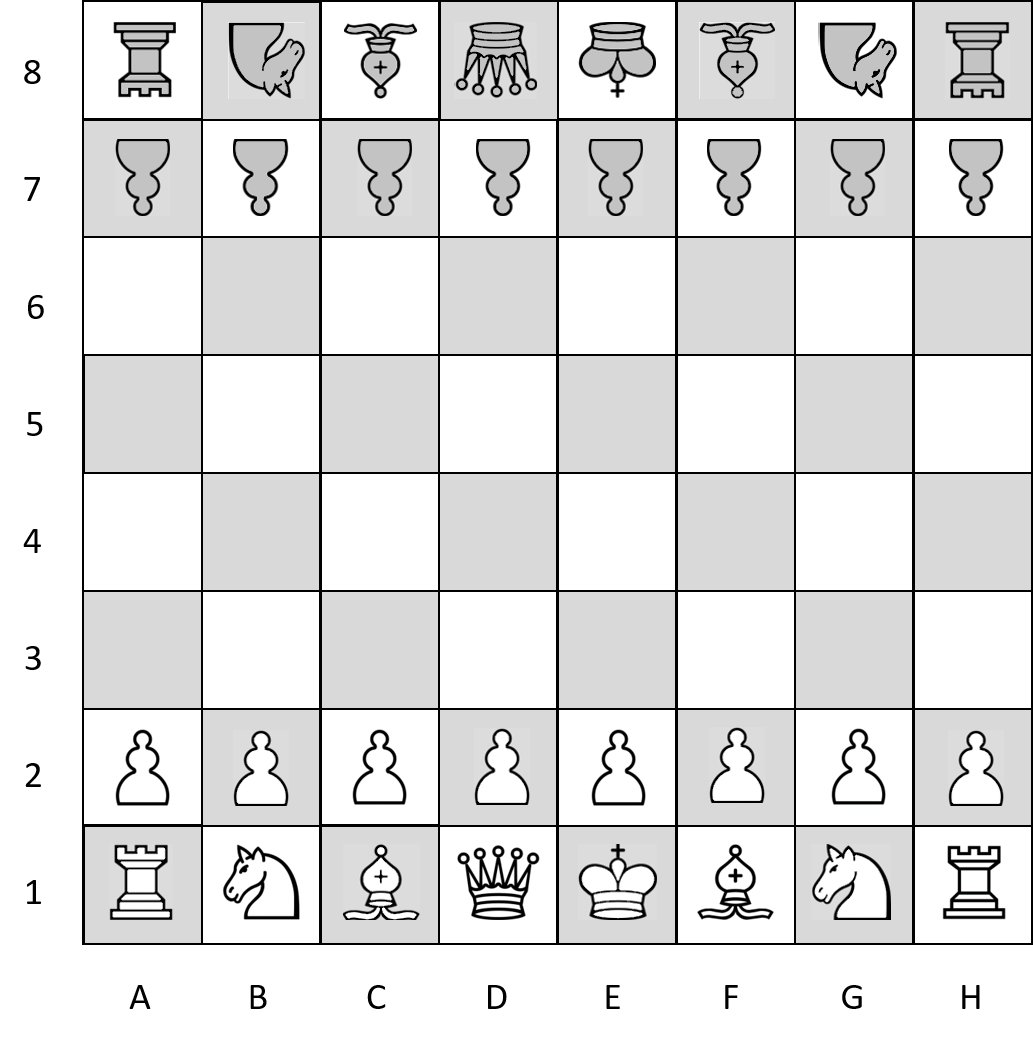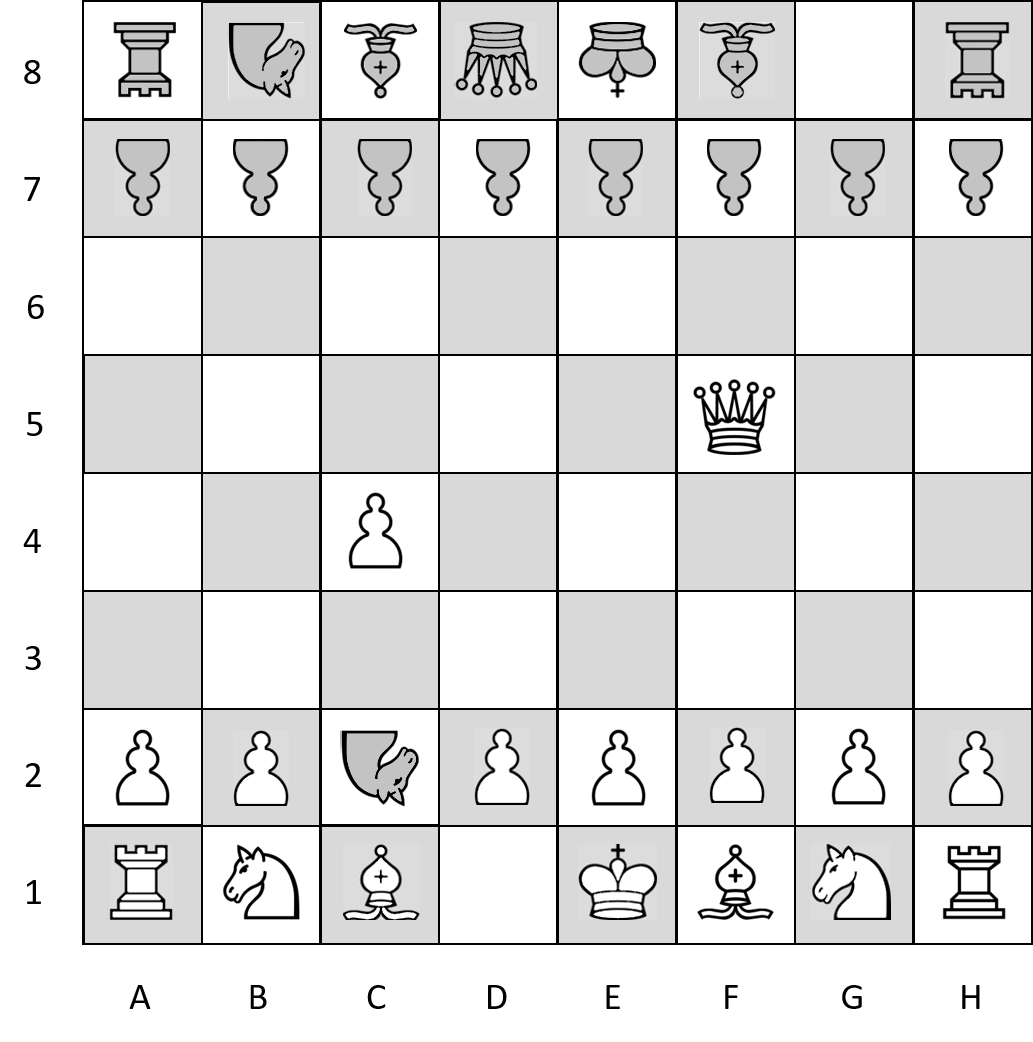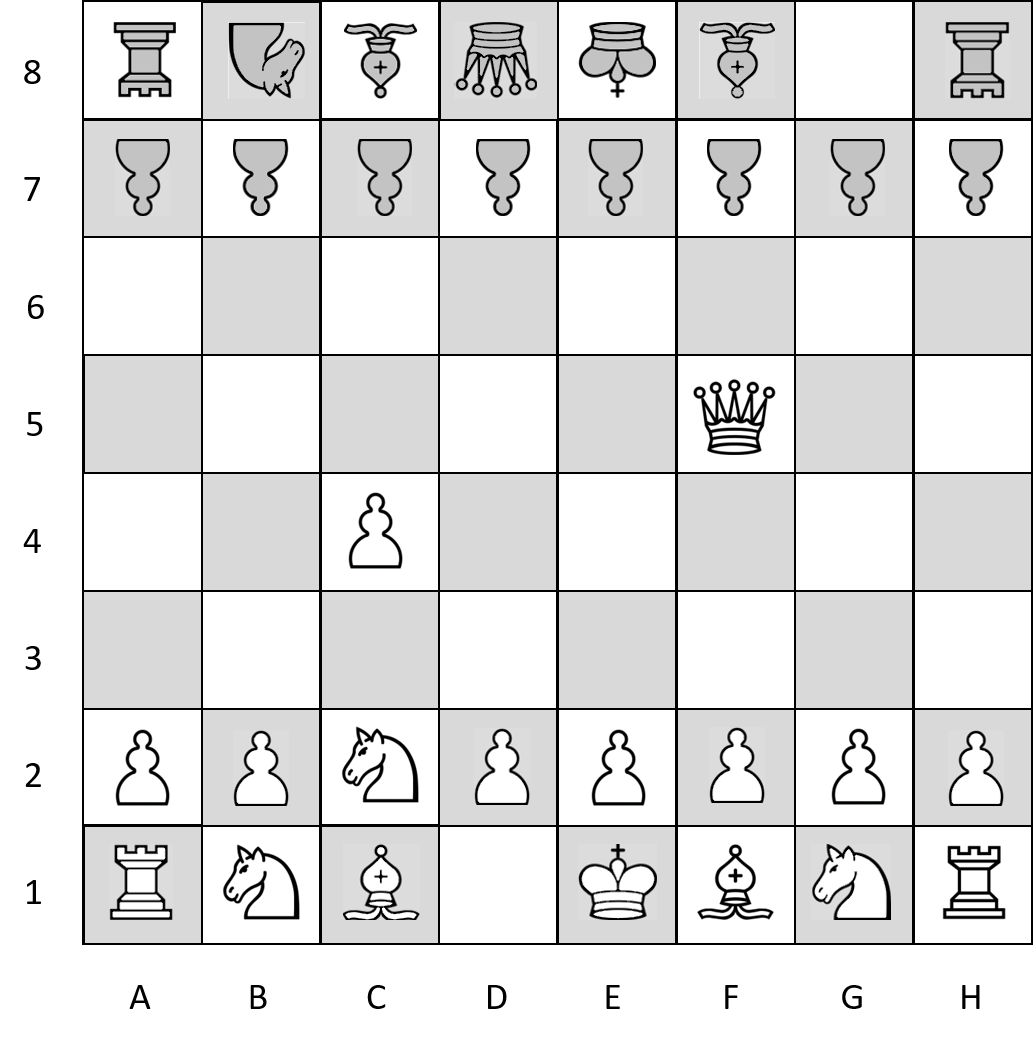Conquer
By Gerd P. Degens
The goal of the game is to conquer the opponent's army and to add it to your own army. The game ends when the last piece of the opponent has been captured. As a result, the winner's army has doubled in size and strength.
The game is played on a classic chessboard with 64 squares and the classic set of pieces. When conquering the opponent's pieces, no new pieces are created, the classic pieces set remains. This also applies to the movement possibilities of the pieces, they remain untouched.
The rules of the game are the same as the Fide rules - the exceptions are described below.
Setup
The starting lineup

Pieces
The game is played on a classic chessboard with 64 squares and the classic set of pieces.
Rules
With the exception of the following rules, the rules of classical chess (Fide rules) apply.
Variant 1
- The king has no special status; capturing the king does not end the game (a checkmate and castling of the king is omitted).
- A captured piece remains on the board; the position of this piece is the square from which the capturer came from (see the example below). This pragmatic rule ensures that a captured piece is given a clearly defined position on the playing field. (The later dropping of a piece, associated with a special rule, is thus omitted, as it is sometimes the case with various takeover variants).
- On the new position of the captured piece, assimilation into the opponent's army takes place in a logical second, as it is replaced by an identical piece of the opponent (see example).
- If a situation appears where perpetual recapture becomes possible, the following applies: same moves as previous moves in the same position are excluded.
- The promotion of the pawn on ranks 1 and 8 is omitted.
An example to illustrate the mechanism
Qc2 Nf5

A captured piece remains on the board; the position of this piece is the square from which the capturer came from - in this case c2. This pragmatic rule ensures that a captured piece is given a clearly defined position on the playing field.

On the new position of the captured piece, assimilation into the opponent's army takes place in a logical second, as it is replaced by an identical piece of the opponent - see c2.

Variant 2
This differs from Variant 1 in the following:
- The king has the special status of classical chess; the capture of the king ends the game (checkmate and castling are part of variant 2).
Notes
Equipment
The game equipment includes a double set of pieces for each player. This is the only way to ensure that the opponent's army can be assimilated into your own army.
Play it !
|
satellite=conquer
ranks=8
files=8
maxPromote=0
promoZone=1
promoChoice=QNBR
graphicsDir=/graphics.dir/alfaeriePNG/
squareSize=50
symmetry=mirror
firstRank=1
lightShade=#FFFFCF
darkShade=#70B09F
rimColor=#0F0F90
coordColor=#EFEF1F
whitePrefix=w
blackPrefix=b
graphicsType=png
useMarkers=1
borders=0
newClick=1
royal=-1
stalemate=win
pawn::::a2-h2
knight:N:::b1,g1
bishop::::c1,f1
rook::::a1,h1
queen::::d1
king::KisO2::e1
|
|
Play on Game Courier
 This 'user submitted' page is a collaboration between the posting user and the Chess Variant Pages. Registered contributors to the Chess Variant Pages have the ability to post their own works, subject to review and editing by the Chess Variant Pages Editorial Staff.
This 'user submitted' page is a collaboration between the posting user and the Chess Variant Pages. Registered contributors to the Chess Variant Pages have the ability to post their own works, subject to review and editing by the Chess Variant Pages Editorial Staff.
By Gerd P. Degens.
Last revised by Gerd Degens.
Web page created: 2023-03-29. Web page last updated: 2023-05-04
